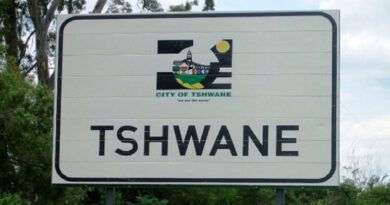Eskom’s maintenance work not yielding results: Oberholzer
Eskom chief operating officer Jan Oberholzer on Monday disclosed that a full 42 generating units at its dilapidated power stations had broken down since early the previous week – some more than once.
As a result, the struggling utility used its emergency reserves – diesel-driven open-cycle gas turbines and pump storage schemes, to try to keep the lights on.
As these reserves were depleted, load shedding intensified to stage 4 over the weekend.
Speaking at an emergency media briefing on the state of the power system, Oberholzer said stage 3 load shedding will continue on Monday. It will be scaled down to stage 2 on Tuesday morning and remain at that level for the rest of the week.
He said the pump storage dam levels have been replenished, but the diesel levels are still low, as diesel has to be transported to the power stations mostly by land. Eskom will continue to use these emergency resources to limit load shedding, but continue implementing load shedding during the night to be able to replenish it.
The current load shedding forecast may change at short notice since the power system remains unreliable and unpredictable.
Oberholzer said 37 of the problematic units have been restored to service. The Cahora Bassa feed of 1 300 MW from Mozambique that was taken down for maintenance over the weekend, is also back in service.
He admitted that the work done by Eskom and its contractors’ maintenance team is not up to standard and units frequently break down shortly after undergoing maintenance. Oberholzer ascribed this to a lack of skills.
Eskom is dealing with this and will be communicating its plans in this regard, he said.
Oberholzer failed to answer when South Africans can expect the maintenance to start yielding results but thanked the staff in Eskom’s generating business and said: “We are committed to improve the standard of living of 61 million people (in South Africa).
Rhulani Mathebula, Eskom group head for generation, said many generating units are vulnerable with known defects. They must be taken offline for repairs, but there is no space in the system to do so. The maintenance is therefore delayed and they often break down unexpectedly as a result.
Kusile, Eskom’s newest power station, is plagued with severe leaks on components, blockages and more failures of pumps “than what one would have expected.” He said Eskom is still optimising the plant and suspects design defects. General Electric, the original equipment manufacturer, is still on site to complete the last two units and Eskom is currently contracting a bigger team and sourcing spares from overseas to improve the plant performance.
Eskom officials spent some time responding to a report that a steam generator due for delivery at its Koeberg nuclear power station was dropped at the manufacturing plant in China, which may impact the delivery time and the timeous completion of the Koeberg life extension project.
This entails among other things the replacement of three steam generators in each of the two Koeberg units.
Acting chief nuclear officer Keith Featherstone said the incident happened more than 18 months ago, when the generator slipped about 30cm when the leg of the rotating structure on which it rested, collapsed. All the repairs have been done already. It has been accepted after testing and analysis by independent inspectors and is expected on site by December 14.
Featherstone also confirmed that while this generator will be late for the outage on Koeberg unit 1 that is scheduled for December 8, one of the generators delivered early for unit 2 can be used instead, since the generator replacements on unit 2 was deferred.
He confirmed that Koeberg’s operating licence lapses in July 2024 and said there is a lot of work to be done to complete the life extension project before then. “It will be a bit of a push for us” te get it all done in time, he said.
Eskom has submitted its application for the life extension of both units to the National Nuclear Regulator who will decided whether to extend the operating licences for both units for another 20 years.
Source: moneyweb.co.za



